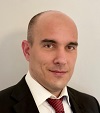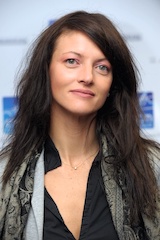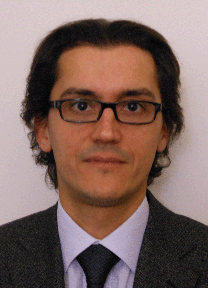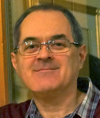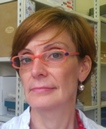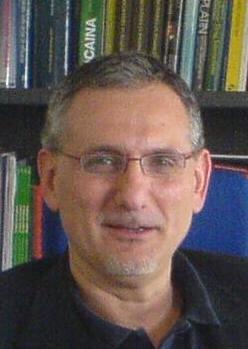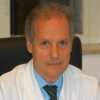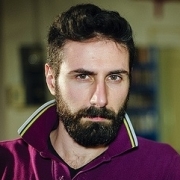Studying at the University of Verona
Here you can find information on the organisational aspects of the Programme, lecture timetables, learning activities and useful contact details for your time at the University, from enrolment to graduation.
Academic calendar
The academic calendar shows the deadlines and scheduled events that are relevant to students, teaching and technical-administrative staff of the University. Public holidays and University closures are also indicated. The academic year normally begins on 1 October each year and ends on 30 September of the following year.
Course calendar
The Academic Calendar sets out the degree programme lecture and exam timetables, as well as the relevant university closure dates..
| Period | From | To |
|---|---|---|
| TEC RAD MED LEZ 1A 1S | Oct 3, 2016 | Dec 9, 2016 |
| TEC RAD MED LEZ 2A 1S | Oct 3, 2016 | Dec 9, 2016 |
| TEC RAD MED LEZ 3A 1S | Nov 28, 2016 | Feb 3, 2017 |
| TEC RAD MED LEZ 1A 2S | Feb 6, 2017 | Apr 7, 2017 |
| TEC RAD MED LEZ 3A 2S | Mar 6, 2017 | Apr 7, 2017 |
| TEC RAD MED LEZ 2A 2S | Apr 19, 2017 | Jun 9, 2017 |
| Session | From | To |
|---|---|---|
| sessione invernale esami 1 e 2 anno | Jan 9, 2017 | Feb 3, 2017 |
| Sessione invernale 3 anno | Feb 6, 2017 | Mar 3, 2017 |
| Sessione Esami Estiva 2 anno | Jun 12, 2017 | Jul 7, 2017 |
| Sessione Esami Estiva 1 anno | Jun 26, 2017 | Jul 28, 2017 |
| essione Esami Estiva 3 anno | Jul 3, 2017 | Jul 28, 2017 |
| Sessione Esami Autunnale 2 anno | Aug 28, 2017 | Sep 29, 2017 |
| Sessione Esami Autunnale 1 e 3 anno | Aug 28, 2017 | Sep 22, 2017 |
| Session | From | To |
|---|---|---|
| Sessione Lauree Autunnale | Oct 1, 2017 | Nov 30, 2017 |
| Sessione Lauree Primaverile | Mar 1, 2018 | Apr 30, 2018 |
| Period | From | To |
|---|---|---|
| Vacanze Pasquali 2017 | Apr 14, 2017 | Apr 18, 2017 |
| Festa di Liberazione Nazionale | Apr 25, 2017 | Apr 25, 2017 |
| Festa dei Lavoratori | May 1, 2017 | May 1, 2017 |
| Ricorrenza Santo Patrono "San Zeno" | May 21, 2017 | May 21, 2017 |
| Festa della Repubblica Italiana | Jun 2, 2017 | Jun 2, 2017 |
| Vacanze Estive 2017 | Aug 14, 2017 | Aug 19, 2017 |
| Description | Period | From | To |
|---|---|---|---|
| Tirocinio 1 anno 1^ periodo | Tirocinio 1 anno 1^ periodo | Dec 12, 2016 | Dec 21, 2016 |
| Tirocinio 2 anno 1^ periodo | Tirocinio 2 anno 1^ periodo | Feb 8, 2017 | Apr 12, 2017 |
| Tirocinio 3 anno 2^ periodo | Tirocinio 3 anno 2^ periodo | Apr 10, 2017 | Jun 30, 2017 |
| Tirocinio 1 anno 2^ periodo | Tirocinio 1 anno 2^ periodo | Apr 19, 2017 | Jun 23, 2017 |
| Tirocinio 2 anno 2^ periodo | Tirocinio 2 anno 2^ periodo | Jul 10, 2017 | Aug 4, 2017 |
| Tirocinio 3 anno 3^ periodo | Tirocinio 3 anno 3^ periodo | Aug 28, 2017 | Sep 8, 2017 |
| Tirocinio 1 anno 3^ periodo | Tirocinio 1 anno 3^ periodo | Aug 28, 2017 | Sep 29, 2017 |
| Tirocinio 2 anno 3^ periodo | Tirocinio 2 anno 3^ periodo | Sep 4, 2017 | Sep 29, 2017 |
| Tirocinio 3 anno 1^ periodo | Tirocinio 3 anno 1^ periodo | Oct 3, 2017 | Nov 25, 2017 |
Exam calendar
Exam dates and rounds are managed by the relevant Medicine Teaching and Student Services Unit.
To view all the exam sessions available, please use the Exam dashboard on ESSE3.
If you forgot your login details or have problems logging in, please contact the relevant IT HelpDesk, or check the login details recovery web page.
Should you have any doubts or questions, please check the Enrollment FAQs
Academic staff
 valentina.adami@univr.it
valentina.adami@univr.it
 davide.adamoli@univr.it
davide.adamoli@univr.it
 carlo.biasiutti@ulssasolo.ven.it
carlo.biasiutti@ulssasolo.ven.it
 diego.cavalli@univr.it
diego.cavalli@univr.it
Dall'Oglio Stefano
 marco.ferdeghini@univr.it
marco.ferdeghini@univr.it
 045 812 47 84 (Segreteria) 045 802 74 89 (Segreteria di Istituto)
045 812 47 84 (Segreteria) 045 802 74 89 (Segreteria di Istituto)
 giordano.genovese@azosp.vr.it
giordano.genovese@azosp.vr.it
 gabriele.meliado@ospadaleuniverona.it
gabriele.meliado@ospadaleuniverona.it
 pierluigi.mozzo@univr.it
pierluigi.mozzo@univr.it
 enrico.piovan@asst-mantova.it
enrico.piovan@asst-mantova.it
 stefano.tambalo@univr.it
stefano.tambalo@univr.it
Vasori Simone
 0458124556
0458124556
Study Plan
The Study Plan includes all modules, teaching and learning activities that each student will need to undertake during their time at the University.
Please select your Study Plan based on your enrollment year.
1° Year
| Modules | Credits | TAF | SSD |
|---|
2° Year activated in the A.Y. 2017/2018
| Modules | Credits | TAF | SSD |
|---|
3° Year activated in the A.Y. 2018/2019
| Modules | Credits | TAF | SSD |
|---|
| Modules | Credits | TAF | SSD |
|---|
| Modules | Credits | TAF | SSD |
|---|
| Modules | Credits | TAF | SSD |
|---|
Legend | Type of training activity (TTA)
TAF (Type of Educational Activity) All courses and activities are classified into different types of educational activities, indicated by a letter.
Career prospects
Module/Programme news
News for students
There you will find information, resources and services useful during your time at the University (Student’s exam record, your study plan on ESSE3, Distance Learning courses, university email account, office forms, administrative procedures, etc.). You can log into MyUnivr with your GIA login details: only in this way will you be able to receive notification of all the notices from your teachers and your secretariat via email and soon also via the Univr app.
Gestione carriere
Graduation
Orario Lezioni
Si pubblicano gli orari definitivi delle lezioni relativi al 2° semestre dell'A.A. 2023/2024
La frequenza in aula delle lezioni è obbligatoria ed è prevista per tutti e tre gli anni di corso.
Documents
| Title | Info File |
|---|---|
|
|
pdf, it, 40 KB, 26/09/23 |
|
|
pdf, it, 36 KB, 12/03/24 |
|
|
pdf, it, 32 KB, 26/09/23 |
|
|
pdf, it, 31 KB, 10/04/24 |
|
|
pdf, it, 35 KB, 12/03/24 |
Calendario Esami
in questa pagina verranno pubblicati i calendari degli esami del Corso di Laurea.
Documents
| Title | Info File |
|---|---|
|
|
pdf, it, 51 KB, 20/12/23 |
|
|
pdf, it, 19 KB, 10/01/24 |
|
|
pdf, it, 48 KB, 10/01/24 |
|
|
pdf, it, 50 KB, 19/01/24 |
Student login and resources
Attività Seminariali/a scelta dello studente
Ogni anno accademico, il CdS rinnova l'offerta per ciascun anno di corso di attività didattiche seminariali e a scelta dello studente che vanno ad integrare le conoscenze e competenze di base su specifici ambiti della diagnostica per immagini, medicina nucleare e radioterapia.
Tirocinio
in questa sede sono presenti le istruzioni operative da seguire e i documenti da allegare in caso di infortunio in tirocinio.
Agli studenti immatricolati, il CdS fornirà un link per accedere al regolamento di Tirocinio.
Documents
| Title | Info File |
|---|---|
|
|
pdf, it, 948 KB, 14/03/24 |
|
|
pdf, it, 576 KB, 14/03/24 |
|
|
pdf, it, 186 KB, 15/03/24 |
|
|
msword, it, 34 KB, 15/03/24 |

